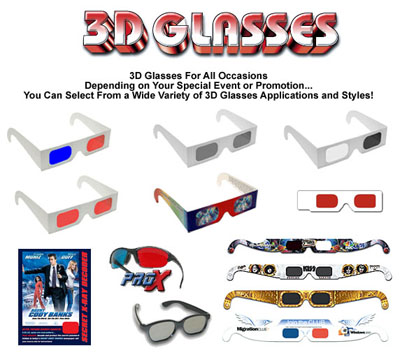Panasonic, Sony, Samsung and XpanD finally team up for an active 3D glasses standard and CEA is playing catch up on the IR glasses problem, but many of the new HDTVs for 2011 are using Bluetooth technology to keep their glasses in sync, again without any promise of cross-manufacturer compatibility. The companies are announcing the Full HD Glasses Initiative, which should lay down a standard for consumer active shutter glasses to communicate over Bluetooth or IR and the new glasses should be backwards compatible with this year’s TVs, although early adopters from 2010 have no such guarantee……………
Panasonic Corporation, Samsung Electronics Co. Ltd., Sony Corporation and X6D Limited (XPAND 3D) announced their intent to collaborate on the development of a new technology standard for consumer 3D active glasses, under the name Full HD 3D Glasses Initiative. With this new agreement, the companies intend to work together on the development and licensing of radio frequency (RF) system 3D active glasses technology, including RF system protocols between consumer 3D active glasses and 3D displays such as televisions, personal computers, projectors and 3D theaters with XPAND active shutter glasses. The standardization will also include multiple types of infrared (IR) system protocols between 3D active glasses and 3D displays, ranging from the protocols jointly developed by Panasonic and XPAND 3D to the proprietary protocols of Samsung and Sony. The license of today’s newly announced Full HD 3D Glasses Initiative is targeted to be released in September 2011, at which time the development of new standardization-applied active 3D glasses will begin. Universal glasses with the new IR/RF protocols will be made available in 2012 and are targeted to be backward compatible with 2011 3D active TVs. Through this initiative, the four companies aim to widely introduce universal active 3D glasses to the market.
Today’s announcement marks a unique collaboration of the world’s leading 3D TV manufacturers and 3D technology providers for the benefit of consumers. Glasses utilizing 3D active technology benefits consumers in that they enable Full HD 3D picture quality to be displayed to each eye, as well as a greater freedom of movement thanks to Bluetooth technology. “Panasonic has been working to standardize 3D glasses technologies, and in March, we announced a joint licensing of IR system protocols with XPAND, backed by several participant companies. We are very pleased that today’s latest collaboration will incorporate our previous concept into these new standardization efforts,” said Masayuki Kozuka, general manager of Media & Content Alliance Office, Corporate R&D Division, Panasonic Corporation. “We hope the expanded collaboration on this 3D standardization initiative will make a significant contribution toward accelerating the growth of 3D-related products.” “Today’s announced collaboration underscores Samsung’s promise to meet consumer needs among the ever-changing advancements of home entertainment and consumer electronics technology,” said Jurack Chae, vice president, R&D Team, Visual Display Business, Samsung Electronics. “To-date, active 3D technology has proven to be the most popular choice for consumers in the 3D TV market. According to the NPD Group, Active 3D technology took an average of 96 percent share of the U.S. 3D TV market in the first half of this year; and this Full HD 3D Glasses Initiative will help further drive consumer adoption and understanding of active 3D-the technology that provides the clearest and most immersive 3D experience available.”
“Through this alliance, we all look forward to addressing critical industry issues to enable a better consumer experience across products. We believe active 3D technology is the most suitable method to deliver full 1080p picture quality to each eye, giving consumers the 3D experience they most desire,” said Jun Yonemitsu, deputy senior general manager, Home Entertainment Development Div., Sony Corporation. The Bluetooth SIG supports the industry’s move to standardize on Bluetooth technology in 3D glasses. “These market leaders are coming together to make the 3D experience better for the consumer. It makes perfect sense that Bluetooth technology would be a vital component of that solution, both for its mass market ubiquity and the freedom and convenience it provides,” said Michael Foley, Ph.D., executive director, Bluetooth SIG. “And while today’s news is exciting, this is just the beginning-Bluetooth technology in the living room makes sense in 3D glasses, stereo surround systems, remote controls, and ultimately the hub of the living room-the TV.”
Bluetooth wireless technology is the global wireless standard enabling simple connectivity for a broad range of electronic devices. Version 4.0 featuring Bluetooth low energy technology creates new application opportunities for products within the mobile phone, consumer electronics, PC, automotive, health & wellness, sports & fitness and smart home industries. With nearly two billion devices shipping annually, Bluetooth technology is the only proven wireless solution for developers, product manufacturers, and consumers worldwide. Backed by industry leading companies, the Bluetooth SIG empowers more than 14,500 member companies to collaborate, innovate and guide Bluetooth wireless technology. For more information please visit www.bluetooth.com. Bluetooth wireless technology: Simple. Secure. Everywhere.
[ttjad keyword=”hdtv”]




